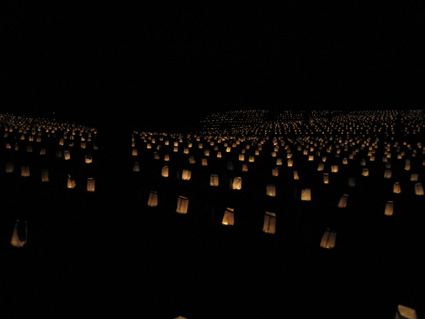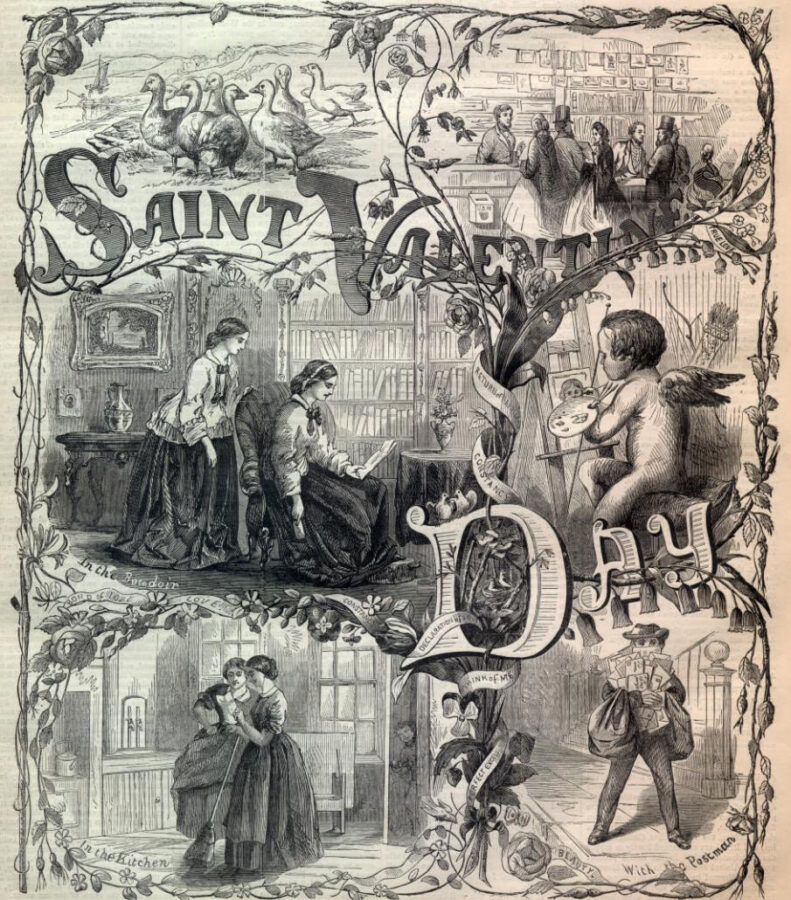
My interest in the Civil War should have been a wonderful accident of birth and geography. I was born, raised, studied, and worked around key sites in that event’s history—quite literally living and breathing in the material of the war. Surely, my own enthusiasm for the subject must rate back to this upbringing, just as my older brother’s (who I take it on good authority shares many of my genes) inability to get bitten by the “bug” relates to his upbringing far away in Arizona. And yet, deep down—at least on the conscious level—I don’t really believe that. In truth, the rather unique environs in which I was raised were much more related to my flight from the subject than my embracing of it.
In 1992, my parents fled south of the all-encompassing sprawl of Northern Virginia along the same trajectory that Lee fell back before Grant. Every new home we settled in, before finally strategically digging in on the south bank of the Rappahannock against hour-long commutes and rising gas prices, was surrounded by battlefields and grey highway markers. Markers that now, having gone back as a driving adult, seem designed to maim and kill as many amateur historians in car accidents as possible—a nefarious plot, I suspect, from twisted academics to prevent any outsiders from becoming wise enough to challenge their corrupting hold over the minds of the youth of America. Growing up, the significance to many of the places was lost on me—a kid trying desperately to find new friends in new locales. Woods were woods and trails were trails and school work did not blend into leisure activities.
The earliest memories I have are of our family’s time in Centreville—a once independent town that has since morphed into the general suburban blob that is Chantilly and Manassas. Now I could have had some memories of points earlier than this, but as one of said earliest recollections involves being struck in the head by a rock and falling off the top of a swing set, I highly doubt they’ll be coming back to me. I lived a stone’s throw away from the Bull Run Battlefield, although due to the aforementioned head injury, stone throwing lost some of its thrill for me. I went there numerous times, but I never visited it as a battlefield. Rather, it was simply the spot of the most conveniently located pool—Ben Lomand Regional Park and SplashDown Waterpark neighbor the actual battlefield. Any fond memories I had of the place rarely strayed beyond the green, frog-head-shaped ice cream they served with gum balls for eyes. Even when I began studying the Civil War in school, that ice cream was my strongest association to the place. Faulkner may have wanted to be in Gettysburg when it was not yet two o’clock in 1863, but my 14-year-old self still was, in an instant, poolside in July when the only thing that hadn’t begun yet were my choking attempts to eat ice cream and chew gum at the same time.
When I was 12, we built a house abutting the Chancellorsville Battlefield—an idea quickly and perhaps over-enthusiastically borrowed from us by Walmart—and I promptly began to trip over Civil War history like the gangly, clumsy teenager I was. I entered both Chancellor Middle and Chancellor High School, whose mascot was a cavalry horse and whose colors were, at least at the time, blue and grey. The schools were also—I feel I must add as a caution—designed by an architect that usually worked on prisons, and it shows. (At least, however, they were built before 9/11 and allowed to have semi-normal names, unlike the nondescript, flag-waving Liberty and Freedom schools that followed them. I half expect to find Patriotism Double Plus Good Technical School next time I return.) I learned to drive on battlefield park roads, watched fireworks next to the Bloody Angle, and re-cleared more battlefield paths than I can possibly remember as a scout. The significance of it all passed over my head, however, as I was assuredly too busy watching MTV, chasing girls, playing electronic video games, and all the other stuff young rapscallions got up to in those times. History was a thing that happened to other people a long time ago. It sure as hell—I thought—wasn’t bothering me now.
The closest I came to wrapping myself in any of the historical threads lying about was an annual event that, should I ever return to town, I must try to attend again. Each Saturday of Memorial Day weekend, the Fredericksburg National Cemetery is transformed. From the back fence down to the slope of Marye’s Heights, every small square headstone is framed with two white-bagged candles. Fifteen thousand of these soft glowing compatriots do their best to hold up their fallen comrades for public contemplation. It is a beautiful and solemn occasion that must be seen … and one that requires a fair amount of set-up beforehand. I first came to the Luminaria as a young scout very much interested in lighting things on fire—usually the candles, if I was properly supervised—and somewhat interested in “heroically” putting out any errant, escaping flames. The whys and hows of the occasion held little interest to me. As I got older, though—and screwed up my sense of shame to the sticking place—I became interested in acting and public speaking. While not possessing the rich tones that entice women and enfeeble men as I do today, I could project and pronounce well enough to assist the ever professional but ever undermanned Park Service at one of their less involved stops along the Luminaria trail. This was probably my first exposure to primary Civil War narratives and I was certainly intrigued by what I saw about death and memorial during the conflict. In fact, niggling quotes from those nights drove me, much later, to read works like Drew Gilpin Faust’s This Republic of Suffering, but at the time I was still more worried about memorizing the words than knowing the meaning behind them—and, sadly, it was really only one night a year.
I was rebellious in my choice of college. Seeing that I wasn’t really taking advantage of the history dripping around me, I decided to be bold and strike out for new horizons. I quickly left that half-preserved, colonial antiquing town and arrived in Williamsburg, a half-preserved colonial antiquing town …within reasonable driving distance of the beach! One could also say I was leaving the Civil War for the Revolutionary, but seeing as the campus’ main building was burned by Union forces, I suppose I didn’t really leave anything. At university, I shied away from history and delved deep into the sciences and theater. Perhaps sensing the economic storm coming, I figured I would be safe with a chemistry degree. (I was so adorable back then.) I did minor in history, but it was mostly non-Western and you can’t throw a brick without hitting a history class at William and Mary. I tested out of any lower-level course that might have included the Civil War and saw no need of taking any elective that did. I walked to class through battlements, cannon fire, mustering troops, and many an excavation. But, while I certainly appreciated the unique spectacle it all made, all this cacophonous assault on my interests did was remind of home. As a strong, independent young adult determined not to fall in the trap of many of my fellow students and move back in with my parents, any such thoughts were unwelcome. I graduated, got a job in Petersburg (Petersburg! Lady Fate must have been blue in the face from all the effort) and put all the rest behind me.
So how did I lapse? How did this period finally sink its tendrils into me? Did the immunity I built up through so much childhood exposure finally weaken from my wild, hedonistic college lifestyle? Did I make a promise to a dying re-enactor? Was I brainwashed by Civil War historians? The answers, of course, are “No,” “No,” and “Shelby Foote is the kindest, bravest, most wonderful human being I’ve ever known in my life.” Quite simply, the aforementioned exasperated Lady Fate decided to throw the kitchen sink at me and hit me with a devastating combo unseen outside of grainy kung-fu movies. It would be a series of blows from which I would not completely recover. First, I lost my “sure thing” job—2009 was not entirely the most desirable year to graduate—and after trying to grind it out working at a brewery and winery—positions that made me popular at parties but not with a landlord that refused to be paid in alcohol—I was forced to return home to lick my wounds and reorganize. Now that my worst fears had been realized, the stigma of being attached to ideas of home lessoned. I was also “blessed” with quite a bit more free time and a dusty library card that survived a surprising number of lost wallets and changes of location. Most of the nearby jobs that might make easy use of my immense acting talent—which I had oddly assumed was my only avenue left since my scientific ambitions were obviously ruined forever—were historical in nature.
The big push, however, came from a source that I certainly wouldn’t have anticipated. I strongly hope not to make the culmination of this post to look like an advertisement, but for those well versed in Civil War online commentary, The Atlantic blogger Ta-Nehisi Coates’ posts on the subject have certainly flashed across your eyes and hopefully sent eyes across your pages. Through conversations about the subject in his well kempt digital salon, many old memories returned to me in a new light, and the lodestone I was wearing was finally beaten into an armor I could wear. I can’t entirely say how such voodoo occurred, but after witnessing my life plans seemingly dashed, having an audience receptive to the exploitation of the few untapped resources of my upbringing surely helped. Books were recommended to me then summarily read, information processed and stored, and before I knew it, a new patchwork of narrative was spun from the previously disparate threads of my childhood. Like a surgeon who’s misplaced his patient’s birthday present, I had the gift inside me all along. I was an accidental scholar, and all that was left to do was to use my re-found familiarity to lead tourists around the playgrounds-cum-battlefields of my youth on gyroscopic mounts. Which of course I did.
Image Credit: National Park Service.
